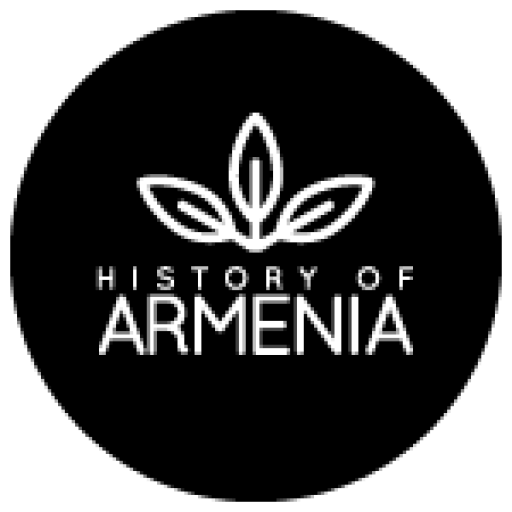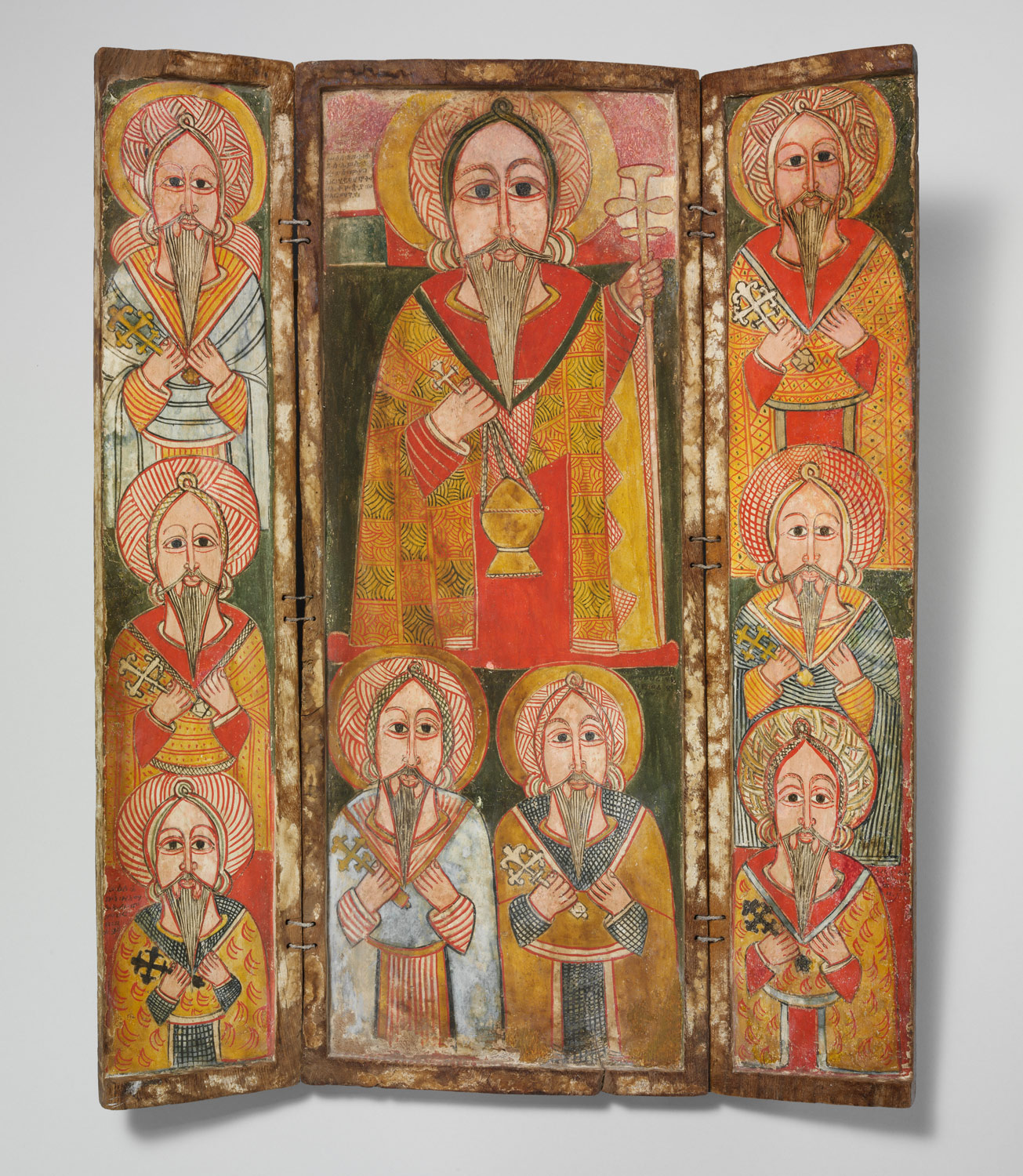This highly original icon is a tribute to the revered Ethiopian visionary Ewost’atéwos, who was born about 1273. The House of Ewost’atéwos is one of the two major monastic orders of the Ethiopian Orthodox Church. Ethiopia’s earliest state adopted Christianity as its official religion in the fourth century. The country thus shared with Armenia the distinction of being one of the world’s two earliest Christian kingdoms. Ethiopian Christian clerics, who were deeply versed in the history of their faith, were well aware of Armenia’s unique position in Christendom, and of the two Church’s doctrinal similarity and anti-Chalcedonian Position. Both peoples over the centuries had furthermore many important points of religious contact.
During the next two centuries, foreign missionaries disseminated Christianity beyond Ethiopia’s elite circles and founded monastic centers in the remote northern regions of Ethiopia and Eritrea. The abbots of those centers became the chief figures in the church’s local hierarchy. In the fourteenth century, Saint Ewost’atéwos founded several more monasteries in northern Ethiopia before violent doctrinal disputes led to his exile to Egypt and then Armenia, where he died. After the death of Saint Ewost’atéwos in Armenia, his disciples had returned home, bringing at least one Armenian with them.
The eight acolytes surrounding Ewost’atéwos are depicted to underscore their devotion and allegiance. Only the vibrant, swirling patterns of their colorful robes animate and distinguish the otherwise identical figures. The painting’s considerable scale suggests that it was the property of a monastery, whose historical origins and ties to neighboring communities it recorded. According to Jacques Mercier, an authority on Ethiopian culture, this is the only known icon from northern Ethiopia dedicated to a monastic genealogy.
This is the only known icon devoted to the genealogy of a monastic order. Its subject is the “House of Ewost’ atéwos,” one of two major monastic orders of the Ethiopian Orthodox Church. Born circa 1273, St. Ewost’ atéwos founded a number of monasteries in northern Ethiopia. Doctrinal disputes led to his exile in Egypt and Armenia, where he died around 1352. In this visual genealogy of the Ewost’ atéwos house, he is heralded at the summit of the central panel as a revered visionary surrounded by his followers. In his left hand is a prayer staff carried by traveling monastics, and in his right are a censor and cross wielded for blessing. The inscription directly above identifies him as “revered teacher of religion in Ethiopia and Armenia.” Eight diminutive disciples are depicted in his image to underscore their devotion and allegiance. Each is identified by name and distinguished by the vibrant, swirling colored patterns of their robes. Given this work’s considerable scale and imagery, it was likely the property of a monastery whose historical ties to neighboring communities it recorded. A panel painting was regarded as the spiritual embodiment of the saint portrayed.
Sources:
- The Metropolitan Museum of Art.
- Les Arméniens dans le commerce asiatique au début de l’ère moderne (Armenians in asian trade in the early modern era) by Sushil Chaudhury, Kéram Kévonian.

